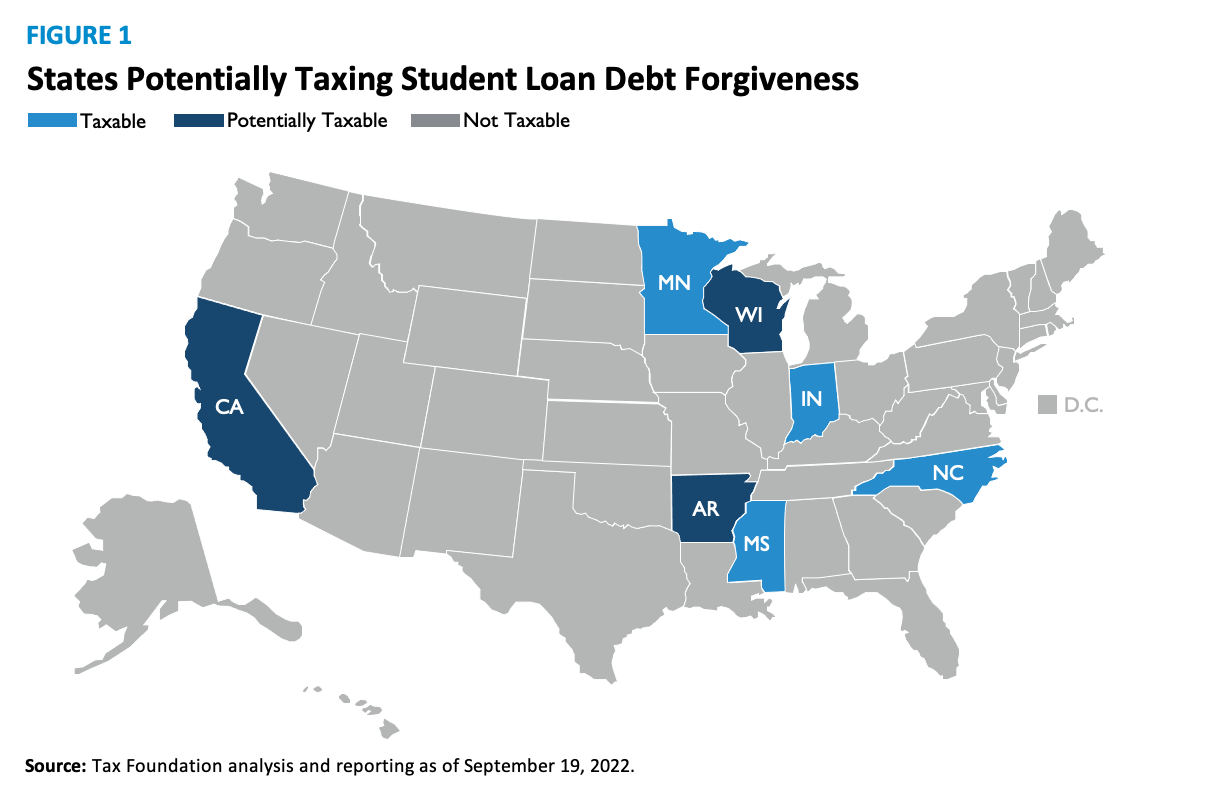President Biden’s Student Loan Forgiveness: The Impact on State Tax Revenues
This post first appeared on September 19, 2022 at AEIdeas. AEIdeas is a public policy blog from the American Enterprise Institute (AEI).
By Alex Brill and Grant M. Seiter
More than 43 million Americans will see their student loan debt partially or completely forgiven under President Biden’s student loan relief plan. For most, this gift will arrive tax-free. But for those residing in a handful of states, their state income tax bills might be several hundred dollars higher, and their state coffers several hundred million dollars richer.
Under federal income tax law, debt discharges, including student loan forgiveness, are generally treated as income. The American Rescue Plan Act, enacted in March 2021, added a little-noticed exception for student loans discharged between January 2021 and December 2024. ( Section 108 of the tax code delineates certain other exceptions, such as bankruptcy.)
Most states that levy an individual income tax conform to the current federal definition of taxable income. In such states, President Biden’s loan forgiveness will not be subject to state income tax. However, seven states have the option to break with the federal tax treatment of discharged student loan debt and weigh the resulting consequences for both taxpayers and state revenues.
Indiana, Minnesota, Mississippi, and North Carolina have already announced plans to include debt forgiveness in their state income tax bases. Debtholders in Arkansas, California, and Wisconsin await decisions from state lawmakers or revenue department officials on the issue. (See Figure 1.)

The Department of Education Federal Student Aid Office reports that 8.4 million individuals in these seven states hold $306 billion in outstanding federal student loan debt. Given the limits on the maximum allowable debt forgiveness per person and income limitations on the policy, we estimate that $92.9 billion of student loan debt held by 8.1 million borrowers is eligible for forgiveness …
Read the full post at AEIdeas.